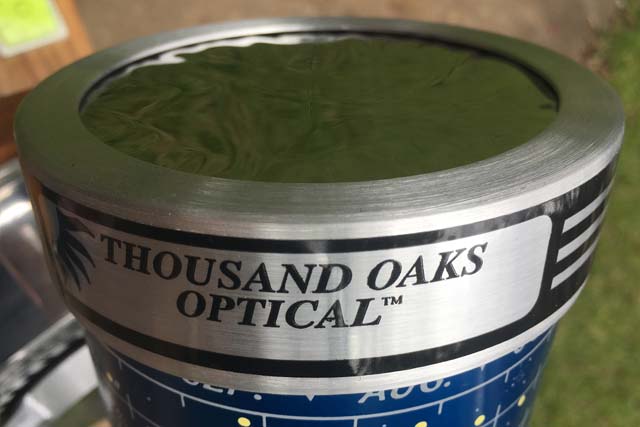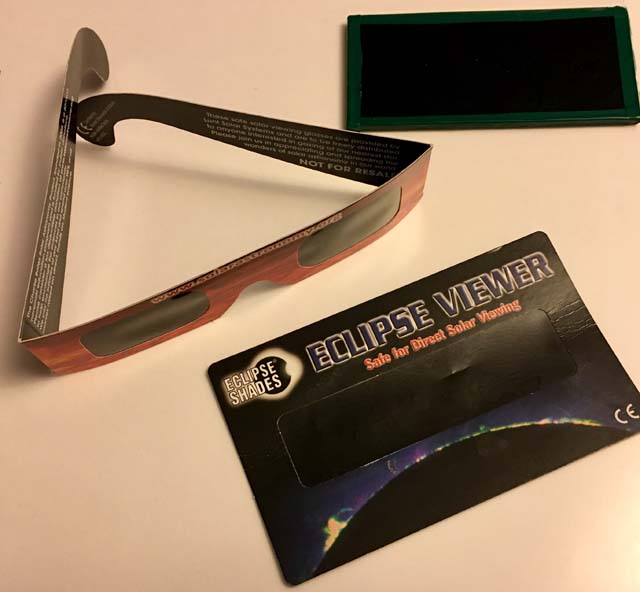- Images
- Blog
- Tools
- Questar
- The Questar telescope
- Questar resource links
- Search for Questar info
- 172mm Focal Reducer
- Afocal adapter for point and shoot camera
- Camera adapter lengths
- Camera adapter threading
- Camera connection
- Camera focusing
- Custom counterweight
- Drift Alignment Joy
- Finder Eyepiece Compatibility
- The Questar Moon 1981
- Questar Powerguide II Battery Life
- Questar Zone, How to Service Videos
- Red Dot finder mount for Questar
- Questar Viewing Table
- Wedge mounts
- White light solar filters comparison
- How to
- Get started in astronomy
- Astro RaspberryPi Camera and kin, the ASIAir and StellarMate
- Blind Smart-phone Equatorial Wedge or GEM Polar Alignment
- Camera phone adapter
- Celestron FirstScope with equatorial tripod mount
- Coat Pocket Astrophotography
- Day-lapse Images of Earthshine on the Crescent Moon
- Dobsonian Carrying Case
- DSO Astrophotography without a Telescope
- DSO imaging without a star tracker
- Estimating image resolution
- Lunar Eclipse Photography
- Moon photography - a dozen ways to shoot the Moon
- Meteor shower photography & planning
- Matching image sensor size to telescope resolution
- Narrow band imaging with color cameras
- Planetary Image Workflow
- Print and Display Astrophotography
- Observing
- Events
- More
- About
- Contact
Safe Solar Viewing
With total solar eclipses crossing the North American continent on August 21, 2017 and April 8, 2024, lots of us will be spending time staring at the sun. Don't get caught short in a last minute rush of eager eclipse watchers. Choose how you will safely view the sun and get the devices or supplies you need now.
We all occasionally glace directly at the sun without any immediate damage beyond that black spot that fades after a half hour or so. Assuming that a nice dark pair of sunglasses will be all you need for viewing the eclipse is risking blindness. The eclipse is interesting and it is natural to look for much longer than the brief glances we get in daily life. Sunlight also has substantial amounts of invisible infrared and ultraviolet lite that can blind us invisibly.
I've written before about sun safe white light filters for telescopes. Today's note conentrates on viewing with just your eyes or binoculars. Filters for binoculars are similar to those for telescopes, except that you need two of them. You can get them commercially from the same sources as telescope filters, or make your own using plastic solar filter sheets.
You can also find or make projection devices for viewing the sun indirectly as simply as punching a hole in a piece of cardboard. Be sure to read NASA's advice on Eye Safety During a Total Solar Eclipse. Some common options for direct viewing with just your eyes are shown below:
Glasses
Welders glass #12 and higher are safe for looking at the sun; easy to find and inexpensive. I cover the edges of the glass with plastic tape to protect from cuts. Many welding goggles are sold with #5 glass, these are NOT safe for looking at the sun. Make sure that they are at least #12 glass or a solar film specifically certified as safe for visual observation of the sun.
Sun safe solar filters should be certified to comply with either the CE British Standards Institute #0086 Notified Body HP2 4SQ or ISO 12312-2:2015 standards.
Sun safe solar filter film is available as inexpensive cardboard eyeglasses and rectangular cards. I find that the cardboard glasses get uncomfortable quickly and are hard to share. The rectangular cards are easy to share with friends with or without glasses. All of these options are available for less than a couple of dollars. More comfortable sunglasses style options are available, but for about the same price you can get solar safe binoculars that offer a magnified view.
Binoculars
Safe solar filters can be added to binoculars for a close up view. Dedicated solar viewing binoculars are also made. These have the safety advantage of permanently mounted filters.
Lunt Mini Sunoculars are about the same price as comfortable sunglasses style eye protection safe for direct solar viewing. They will show you a lot more detail. They are 6X30mm with 9mm of eye relief and adjust for an eye spacing of 56-71mm.
The solar filter is built in and gives a nice yellow-orange sun. One of my eyes is very near sighted and the eyepiece focus adjustment was enough to accommodate it. With eyeglasses on there was enough eye relief for a good view.
With the built in solar filer, everything other than the sun is black, so it took a moment to get it in the field of view. The FOV is about 3 degrees. The image appeared sharp and the advertised 6x larger. There were only small sunspots are on the sun today and I wasn't able to pick them out with these. I'm confident that mid to large size sunspots will show up well. They are very light and easy to hold steady.
I think that these will be great to have at at the eclipse and for viewing mid to large sunspots. They won't do you any good during totality, but regular binoculars or just your eyes are what you want then. They were less than $30 and I've seen them at B&H Photo, Amazon, and the ASP solar eclipse shop.
Add on filters for telescopes, cameras, and binoculars
For safe visual observation these need to reduce the sun's intensity by 1/100,000. These may be marked optical density ND 5.0, ND100000, or ND 116.
To protect a camera sensor from damage ND 3.8 (ND6310 or ND113) is suggested, but this should only be used when focusing with an electronic screen. DSLR through the lens focusing will exposure your eyes to unsafe levels of sunlight. Neutral density filters not specifically marked as safe for visual solar observation, may not block invisible UV or IR light to levels safe for your eyes.
Solar filters must always be used where light enters your instrument (top or front) and not at the eyepiece end where solar energy is concentrated. Any eyepiece filter or projection device (screens and sun funnels) risks damage to your eyes or telescope.
There are three types of materials used for solar filters:
- metal coated glass - usually a Nickle-Chrome plating on optically flat glass
- metallic coated mylar film (inexpensive and high optical quality)
- metallic coated black polymer film (lower quality, but very robust)

The filter material is mounted in a cell. Filter cells can be made of almost any material: metal, plastic, and cardboard are common. Filter cells either slip over the top or screw (often for cameras) onto the instrument. Slip on filters with solar safety film are easy do-it-yourself projects.
Most telescope makers and astronomical shops will stock them. If the filter is not specifically made for your instrument, you will need to supply the outside diameter of the tube where it will be fitted.
I've had good experiences with two well known makes of solar filters: Baader Planetarium AstroSolar Safety Film and Thousand Oaks Optical. The American Astronomical Society has a list of reputable vendors of solar filters & viewers.
For cameras, I like the Baader ASBF series of filter cells. Their 3 point attachment is easy to remove for totality and the wide collar around the cell shades the camera body during the partial eclipse so that the camera doesn't heat up.

Content created: 2017-03-02 and last modified: 2023-04-14
Comments
![]() Submit comments or questions about this page.
Submit comments or questions about this page.
By submitting a comment, you agree that: it may be included here in whole or part, attributed to you, and its content is subject to the site wide Creative Commons licensing.

Blog
Silver City Heart & Soul Nebulae Revisited
Medulla or Garlic Nebula, CTB1, Abell 85
Nebulae afire off the belt of Orion
City Lights Horsehead & Flame Nebulae
Flaming Star Nebula dark sky vrs city sky face-off
Christmas Tree Cluster and Cone Nebula with more exposure
Christmas Tree Cluster with the Cone Nebula
Horsehead Nebula Face-Off Bortle 2 vrs Bortle 7
California Nebula Face-Off Bortle 2 vrs Bortle 7
Western Veil Nebula from Marfa
Trifid and Lagoon Nebulae Drizzle Stacked
North America and Penguin Nebulae Drizzle Stacked
Return to Coconino Andromeda, M31
Revisiting the Willow House Rosette
Corazón Incendida, the Heart Nebula
Elephant Trunk with the Garnet Star
Balanced HO North America & Pelican Nebulae
The Lagoon & Trifid Nebulas from Marfa
Western Veil Nebula from Marfa
The Great Winter Solstice Conjunction of Jupiter and Saturn
Two days to the Great Jupiter Saturn Conjunction
Worlds Apart, the Jupiter Saturn Conjunction
Raspberry Pi HQ camera first light
Waxing Crescent Moon with earthshine and stars
Vixen Porta II mount adapter or aluminum disk with holes #2
The 2019 ACEAP Expedition to Chile
Universe of Stories: Getting Started in Astronomy
View an Apollo flag on the Moon from Earth?
Apollo 50th is my 24th Flickr Explore Selection
Shooting the video stars - Moon and Jupiter
Ready for a change in perspective
Jupiter and the Galilean Moons through a camera lens
2022 the Solar System in one view
As hard to see as a doughnut on the Moon
Santa Inez miners church Terlingua
Waning gibbous Moon early Christmas Eve
Christmas eve on the eastern limb of the Moon
Mars at 23.3 arc sec with Syrtis Major
BadAstroPhotos Web Site Analytics
Saturn with Pixinsight workflow
Mars Update from Mauri Rosenthal
Waxing Gibbous Moon Terlingua Texas
Io Transit of Jupiter with the Great Red Spot
Not so bad Astro after 2 years
Eyes of the Llama from Urubamba
Moon and Venus over Cusco's El Monasterio
Tiangong-1 Space Station reentry tracking
Apollo - 50 years of human footprints on the Moon, complete!
Waxing Crescent Moon after Astrophotography Meetup
The Great American Eclipse from Above and Below
A million astro photo views on Flickr
Ansel Adams: Moonrise, Hernandez, New Mexico
December Solstice Crescent Moon with Earthshine
January 31 Blue Moon Lunar Eclipse
The Total Solar Eclipse in half a minute
2017 Solar Eclipse from a million miles away
Longhorn Eclipse from a Wyoming Hilltop
Fibs, damn lies, telescopes, and astrophotography
Full Moon before Total Solar Eclipse 2017
Longhorn Crescent Moon from Austin
The Crescent Moon with Jupiter and moons
Eye of the storm 2 - Juno & Jupiter's Great Red Spot
Eye of the storm - Juno & Jupiter's Great Red Spot
A million miles from earth, the Moon and earth east and west
Saturn with Titan, Dione, Tethys, & Rhea
Animated transit of Jupiter by Io
Solar Eclipse 2017 Highway Traffic Map
Mid-South Star Gaze + Questar Meet
Sweet Home Alabama Transit of Jupiter by Io
Update on AutoStakkert on macOS
Diffraction is not the limit for digital images
Teasing life into planetary images
Moon camera comparison: DSLR & planetary cameras
Waning Crescent Moon with Earthshine
1st day of Spring last quarter Moon
Lewis Morris Rutherfurd's Moon
Super Moonrise over Lady Bird Lake
360 Tower pierces the Super Moon
Lisbeth's Birthday Crescent Moon
The Moon and Mars from the Astro Café
Silent and Mechanical Shutter Comparison
Austin's Solar Sidewalk Sun-Day
Another Longhorn Moon over Austin
Jupiter and Venus do a father-daughter dance
Sunset with Mercury, Jupiter, and Venus
Mercury, Jupiter & Venus after sunset
3 months, 92 nations, 3750 visitors, 100,000+ images served
Upcoming Conjunction of Jupiter & Venus
The Perseid Meteor Shower with the Andromeda Galaxy
Waxing crescent Moon from UHD Video
NWS Interactive Digital Forecast Map
M7 the Ptolemy Cluster preview
Five Planets in the Sky at Dusk
Lucky Fat Waning Crescent Moon
Two months, 80 nations, and an embarrassing bug
Saturn with 5 moons: Titan, Rhea, Enceladus, Tethys, & Dione
The nearly full Moon and Saturn with a short tube refractor



 2025
2025
